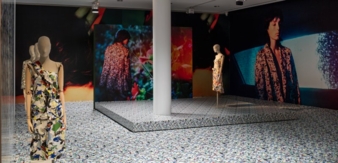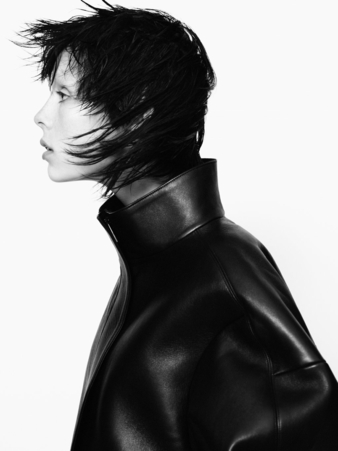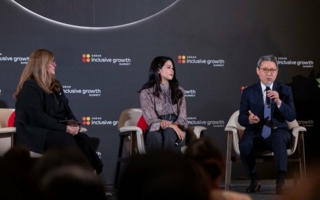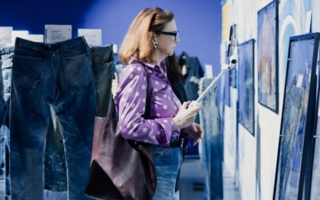06/04/2018 – Jil Sander — auf Deutsch lesen
Fashion for right now
The exhibition ‘Jil Sander, Present Tense’ at the Museum for Applied Art in Frankfurt honours the emblematic works of the German design icons
The Museum for Applied Art in Frankfurt has devoted an area of some 3000 square metres – that is, its entire exhibition space, populated with spectacular and expansive room installations – to the most influential fashion designer in Germany: someone who senses with intelligence and seismographic certainty the spirit of her age, who has redefined femininity, become the epitome of modernity, and has not only translated this enormous sensitivity into streamlined fashion using highly developed technical materials but in doing so has influenced fashion photography, product design, architecture and garden art. The exhibition, indeed, is divided into these same diverse thematic zones. Moreover, visitors are granted behind-the-scenes access: in the ‘studio’ they are given an insight into the intensive research and development carried out by the designer on materials and fabrics, while in the backstage area, haunting video recordings provide a glimpse behind the curtains of a fashion show and an idea of the intense preparation and work that goes on beneath the professionalism.
What the exhibition impressively demonstrates is that Jil Sander has been able to turn her visions into a perfection of reality, thanks to her collaboration with prominent artists who succeeded in bringing expression to her philosophy: in the exhibition areas can be heard the sounds of musician Frédérick Sanchez, who created the music for her parades, while iconic campaign photographs from such important fashion photographers as Peter Lindbergh, Irving Penn, Nick Night and Mario Sorrenti give expression to an independent, introverted style.
“What interests me is the new, the emerging.”
The exhibition displays examples from the designer’s different creative periods. They are staged in such a way and with such contemporary design language and expressiveness, however, that the observer is led straight into the here and now or even – in the space ‘clothed’ in garments of identical patterns with all-over designs from Italian artist Alighiero e Boetti – beamed directly into the future.
Minimalism, purism, androgyneity, simplicity – these are the concepts that, along with the influence of the Bauhaus philosophy of clear lines and the modernity of New Objectivity, represent the Jil Sander style: a ‘less is more’ approach that signifies a quiet femininity, sophisticated forms and understated luxury and is founded on innovative cutting, weaving and processing technologies. In focus is always the material, whether it is high-tech fabric imported from Japan, three-dimensional shaped materials such as neoprene or sculpturally malleable fabrics that she has developed herself with Italian textile producers. Jil Sander is thus both an aesthetic fashion revolutionary and a designer who brings functionality, practicability and comfort to the fore in clothing for working women.
With her visionary creative powers of design, her feel for the present, Jil Sander has managed not only to build up an internationally successful luxury brand but also to meet the aesthetic expectations of a changing society. This means that, to quote her own words, “a woman who wears Jil Sander is not modish but modern.”
Neli Mitewa





